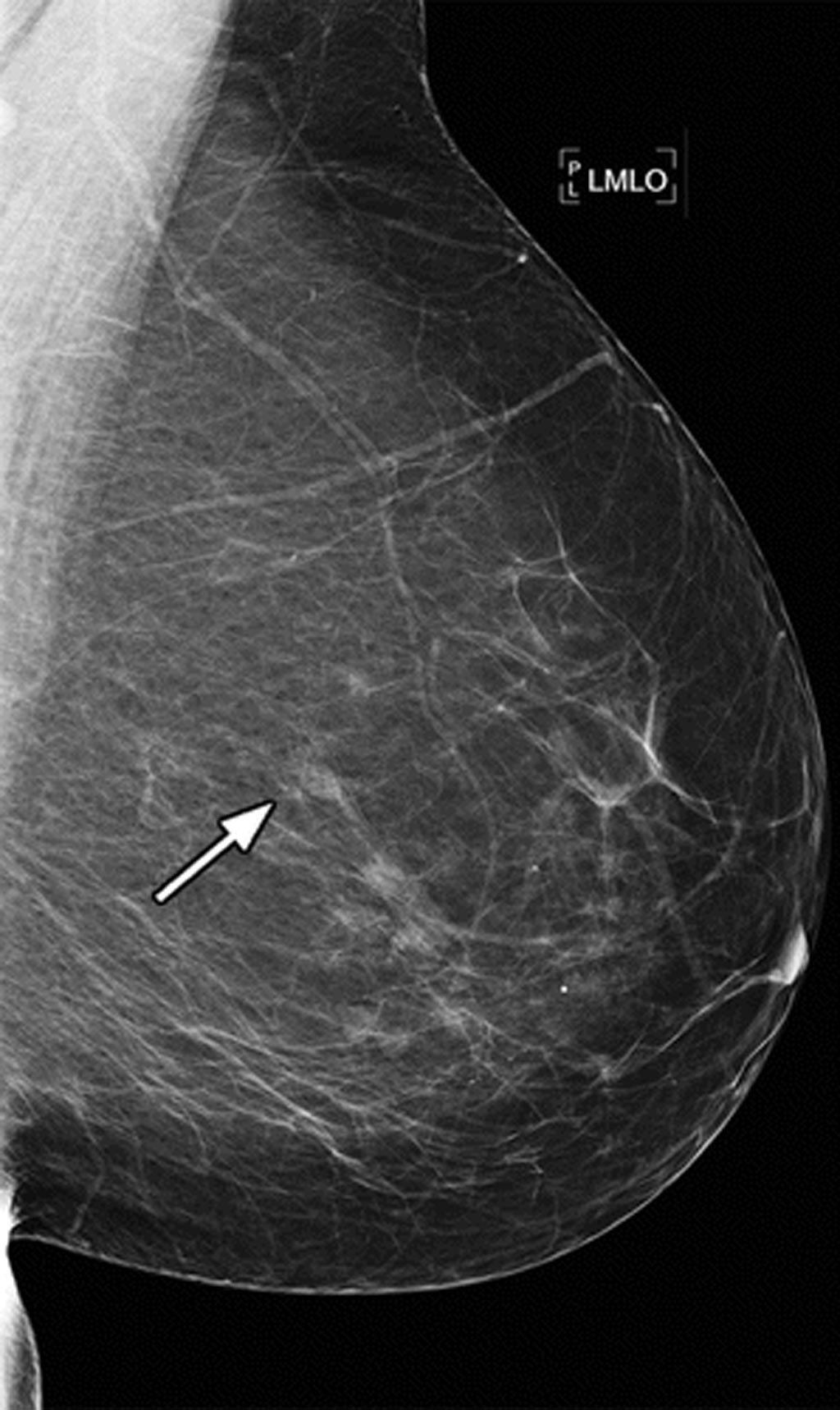3D Mammography Significantly Reduces Breast Biopsies
By MedImaging International staff writers
Posted on 01 Apr 2019
Digital breast tomosynthesis (DBT) considerably reduces the number of women who undergo breast biopsy following an abnormal mammogram, according to a new study.Posted on 01 Apr 2019
Researchers at Seacroft Hospital (Leeds, United Kingdom) and Loughborough University (LBORO; United Kingdom) conducted a prospective study that included 30,933 women who had a full-field digital mammography (FFDM) screening between 2015 and 2016; recalled women also underwent DBT and biopsy. Readers blinded to biopsy results analyzed DBT images in isolation and then in conjunction with FFDM images, and any additional mammographic or ultrasound images. The aim of the study was to evaluate the benign biopsy rate of DBT versus that of FFDM.

Image: An 8-mm indeterminate mass on FFDM, which was interpreted as benign on DBT (Photo courtesy of LBORO).
The results revealed that 1,470 women were recalled for further imaging (a 4.8% recall rate) to assess an abnormality. A final recall group of 827 women (after exclusions) required 571 biopsies, for a biopsy rate of 69%. While biopsy detected 142 cancers, in the other 429 biopsies performed, the suspicious lesion was not cancerous, a benign biopsy rate of 75%. Inclusion of DBT would have reduced the number of biopsies performed on recalled women from 571 to 298--while still detecting the 142 cancers--for a biopsy rate of 36%, and a benign biopsy rate of 52%. The study was published on March 19, 2019, in Radiology.
“The thin slice images of the breast taken with DBT reduce the effect of tissue overlap, which often leads to cancers being missed or to women who don't have breast cancer being recalled for diagnostic imaging,” said lead author Nisha Sharma, MB, ChB, director of breast screening at Seacroft Hospital. “DBT allows for improved reader accuracy and confidence in determining if a mammographic abnormality is concerning or not, and reduces harm to women through fewer false positive biopsies without any reduction in the cancer detection rate.”
DBT acquires multiple images over a limited angular range to produce a set of reconstructed images, which can then be viewed individually or sequentially in a cine loop, and in a three-dimensional (3D) image of the breast, which can viewed in narrow slices, similar to CT scans. While in conventional 2D mammography overlapping tissues can mask suspicious areas, 3D images eliminate the overlap, making abnormalities easier to recognize. It is estimated that 3D DBT will replace conventional mammography within ten years.
Related Links:
Seacroft Hospital
Loughborough University














